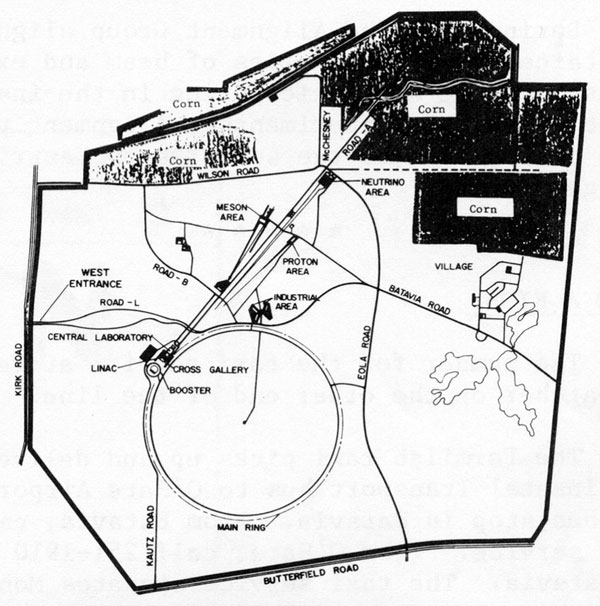Fermilab Returns 1300 Acres to Grain Production

Fermilab acres turned to grain production in 1975
Responding to President Ford's policy of maximum food production in the United States, Fermilab recently signed contracts with three area farmers to place 1,383 acres of the Laboratory site into row crop use in the 1975 crop season. Mr. William Muetze of Batavia, Illinois, has a contract to cultivate 630 acres of corn; Wayne Knight of Sandwich, Illinois, 610 acres, and John Frieden, Batavia, 143 acres.
Figuring a modest 100-bushel per acre production return, the contribution to the world food supply may be calculated as supplying over 6,000 yearly diets of 2,000 calories per day.
In terms of the local economy of the Fermilab area, the addition of the sale of the seed and fertilizer to be used, the transportation and handling of the crop, the storage and initial marketing of the 1/6 million bushels of corn may represent over $400,000 in new money flowing into the local area. The impact on employment and sales in the area is apparent.
The decision to convert these large tracts of Fermilab land into agricultural use is part of a continuing program of good land management. The Fermilab site contains some of the most potentially productive corn/soybean land in the world. Historically, the land has been used as farm land since settlement in the early 1800's. The return of the 1,300 acres to farm use integrates into the present land use of much of the land surrounding the Laboratory. Such use also offers habitat for wild life normal to this area.
The decision to plant corn rather than soybeans came after careful study by the Laboratory administrators. According to Dave Sauer, Manager of Site Services, it was decided that the benefit to soil tilth of corn stalks and the opportunity for weed control afforded by the cultivation of corn were important considerations in the decision. The current world food situation, the demand for grain, and the favorable price of corn on the market also promoted the feasibility of the new program.
Long-range, the Laboratory requires full use of the 6,800 acres of the total Fermilab site for possible future scientific activities. In the immediate future, however, some of this land can be usefully put under cultivation. On the remaining land, the Laboratory seeks to keep site maintenance costs at a minimum while maintaining esthetic appearances and ecological standards. Maintenance of the buffalo herd and the Scottish Highland cattle and support of the prairie restoration inside the Main Ring are facets of this goal.


